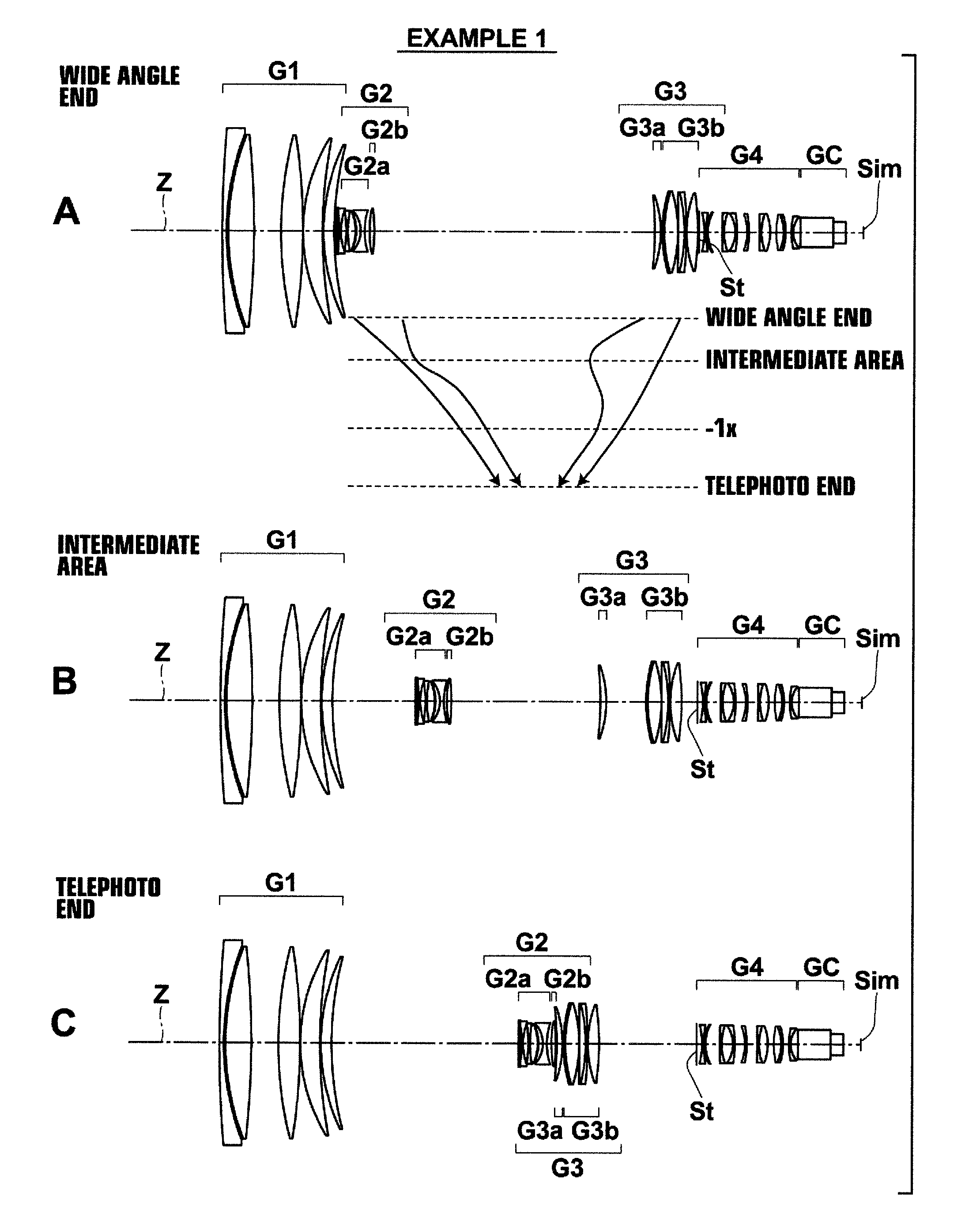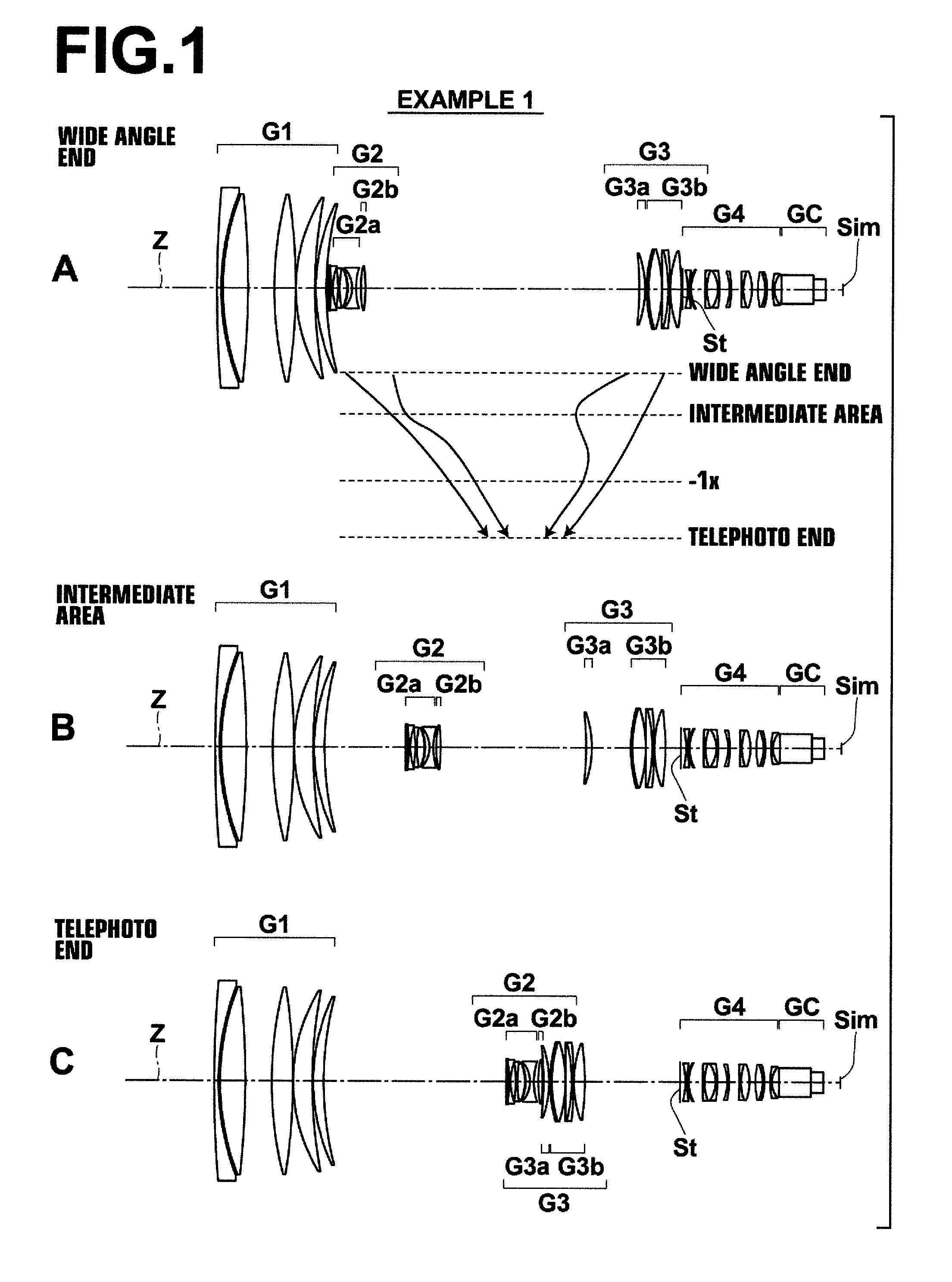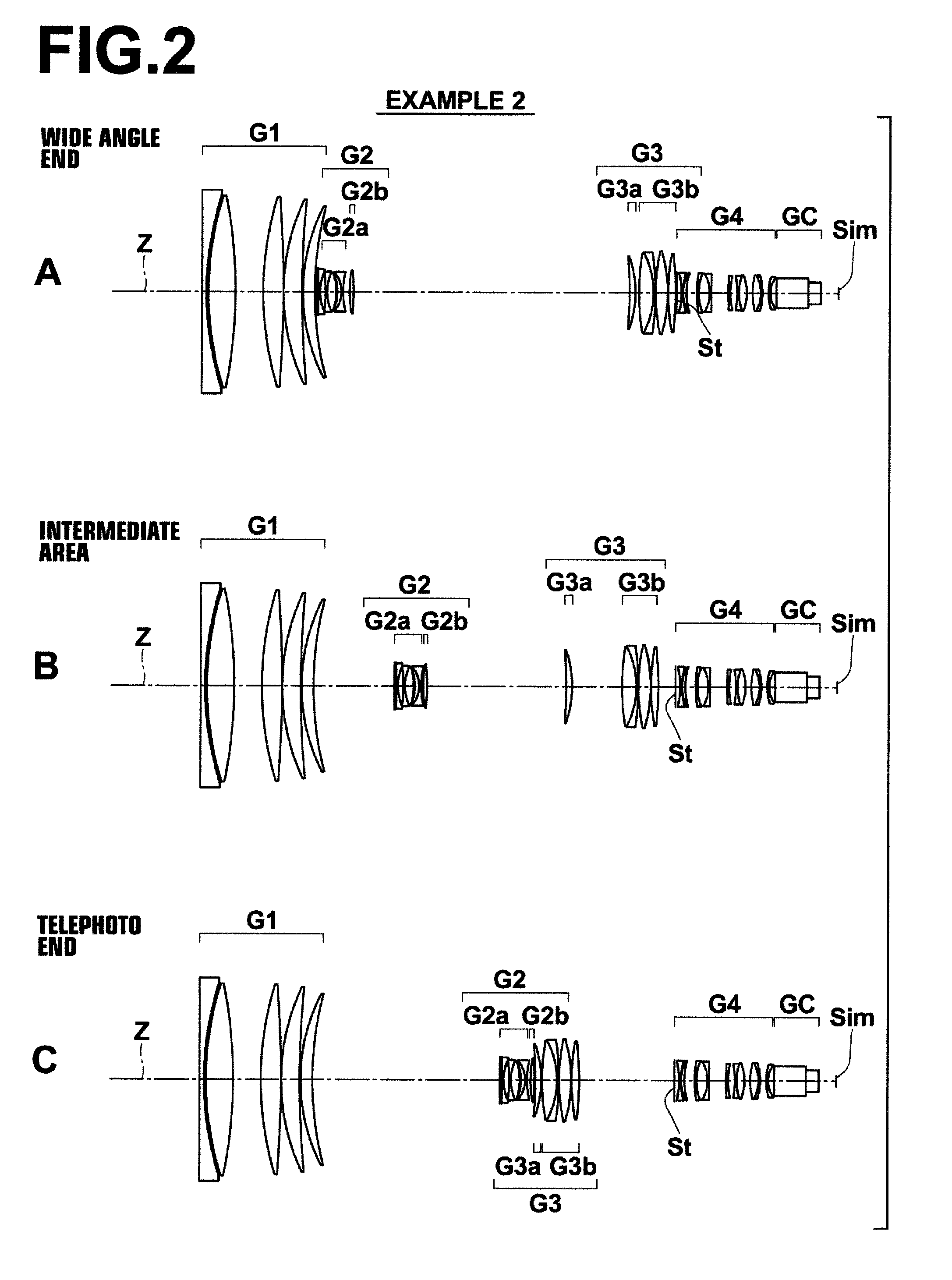Zoom lens and imaging apparatus
a zoom lens and imaging apparatus technology, applied in the field of zoom lenses and imaging apparatuses, can solve the problems of difficult to achieve weight reduction, increase the weight of the lens system, and difficulty in reducing magnification, so as to achieve rapid zoom movement, increase the load on the cam, and high sensitivity
- Summary
- Abstract
- Description
- Claims
- Application Information
AI Technical Summary
Benefits of technology
Problems solved by technology
Method used
Image
Examples
example 1
[0125]The cross sectional view of the lens of Example 1 is shown in FIG. 1. Detailed configurations thereof are shown in FIGS. 16 through 18. FIG. 16 shows detailed configurations of the first lens group G1 and the second lens group G2, FIG. 17 shows a detailed configuration of the third lens group G3, and FIG. 18 shows detailed descriptions from the fourth lens group G4 to the image formation surface Sim.
[0126]In Example 1, the first lens group G1 is of a five-lens configuration including lenses L1 through L5, the second-a lens group G2a which constitutes the second lens group G2 is of a six-lens configuration including lenses L21 through L26, the second-b lens group G2b is of a one-lens configuration including a lens L27, a third-a lens group G3a which constitutes the third lens group G3 is of a one-lens configuration including a lens L31, a third-b lens group G3b is of a five-lens configuration including lenses L32 through L36, and the fourth lens group is of a twelve-lens config...
example 2
[0137]The cross sectional view of lenses in Example 2 is shown in FIG. 2, and detailed configurations thereof are shown in FIGS. 19 through 21. FIG. 19 shows the detailed configuration of the first lens group G1 and the second lens group G2, FIG. 20 shows the detailed configuration of the third lens group G3, and FIG. 21 shows the detailed configuration from the fourth lens group G4 to the image formation surface Sim.
[0138]In Example 2, the first lens group G1 is of a five-lens configuration including lenses L1 through L5, the second-a lens group G2a which constitutes the second lens group G2 is of a six-lens configuration including L21 through L26, the second-b lens group G2b is of a one-lens configuration including a lens L27, the third-a lens group G3a which constitutes the third lens group G3 is of a one-lens configuration including a lens L31, the third-b lens group G3b is of a four-lens configuration including lenses L32 through L35, and the fourth lens group is of a twelve-le...
example 3
[0143]The cross sectional view of lenses in Example 3 is shown in FIG. 3, and detailed configurations thereof are shown in FIGS. 22 through 24. FIG. 22 shows the detailed configuration of the first lens group G1 and the second lens group G2, FIG. 23 shows the detailed configuration of the third lens group G3, and FIG. 24 shows the detailed configuration from the fourth lens group G4 to the image formation surface Sim.
[0144]In Example 3, the first lens group G1 is of a five-lens configuration including lenses L1 through L5, the second-a lens group G2a which constitutes the second lens group G2 is of a six-lens configuration including L21 through L26, the second-b lens group G2b is of a one-lens configuration including a lens L27, the third-a lens group G3a which constitutes the third lens group G3 is of a one-lens configuration including a lens L31, the third-b lens group G3b is of a four-lens configuration including lenses L32 through L35, and the fourth lens group G4 is of a thirte...
PUM
 Login to view more
Login to view more Abstract
Description
Claims
Application Information
 Login to view more
Login to view more - R&D Engineer
- R&D Manager
- IP Professional
- Industry Leading Data Capabilities
- Powerful AI technology
- Patent DNA Extraction
Browse by: Latest US Patents, China's latest patents, Technical Efficacy Thesaurus, Application Domain, Technology Topic.
© 2024 PatSnap. All rights reserved.Legal|Privacy policy|Modern Slavery Act Transparency Statement|Sitemap



